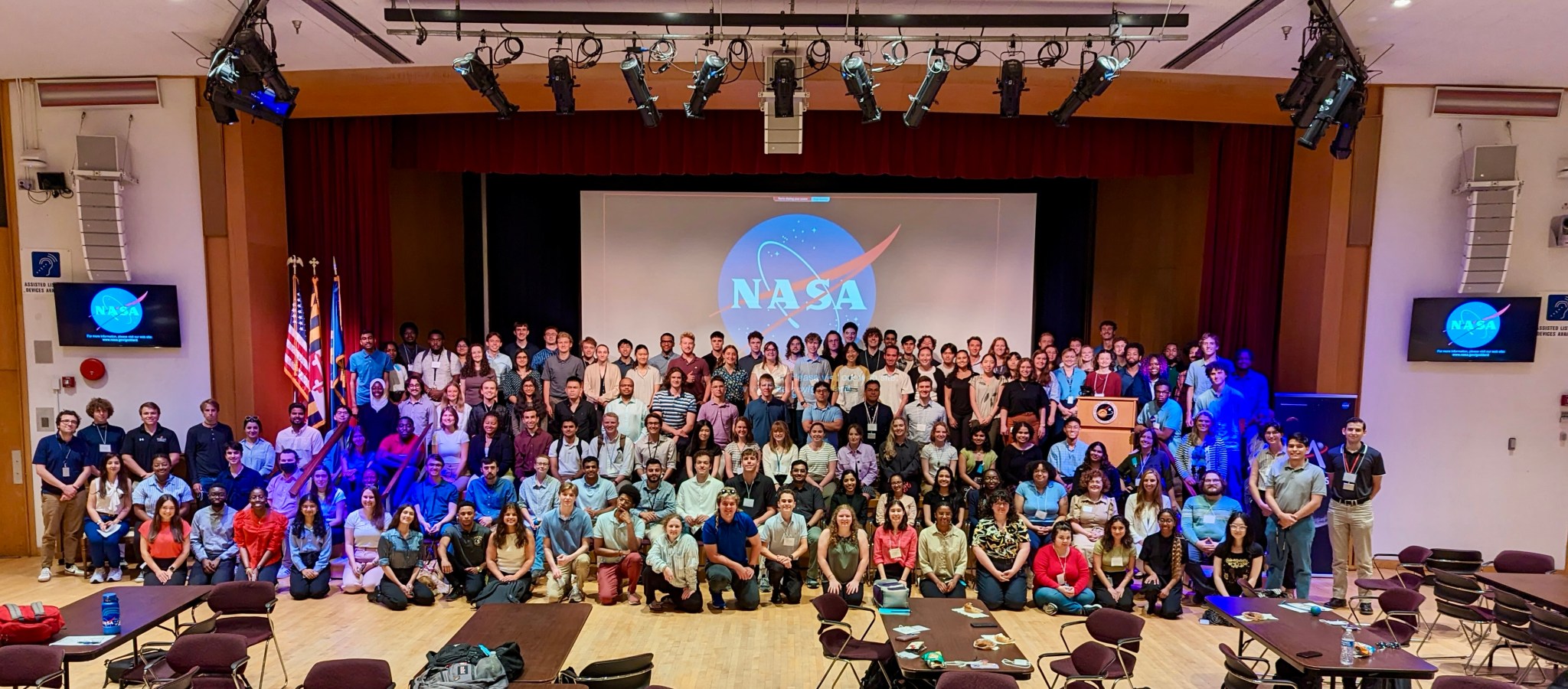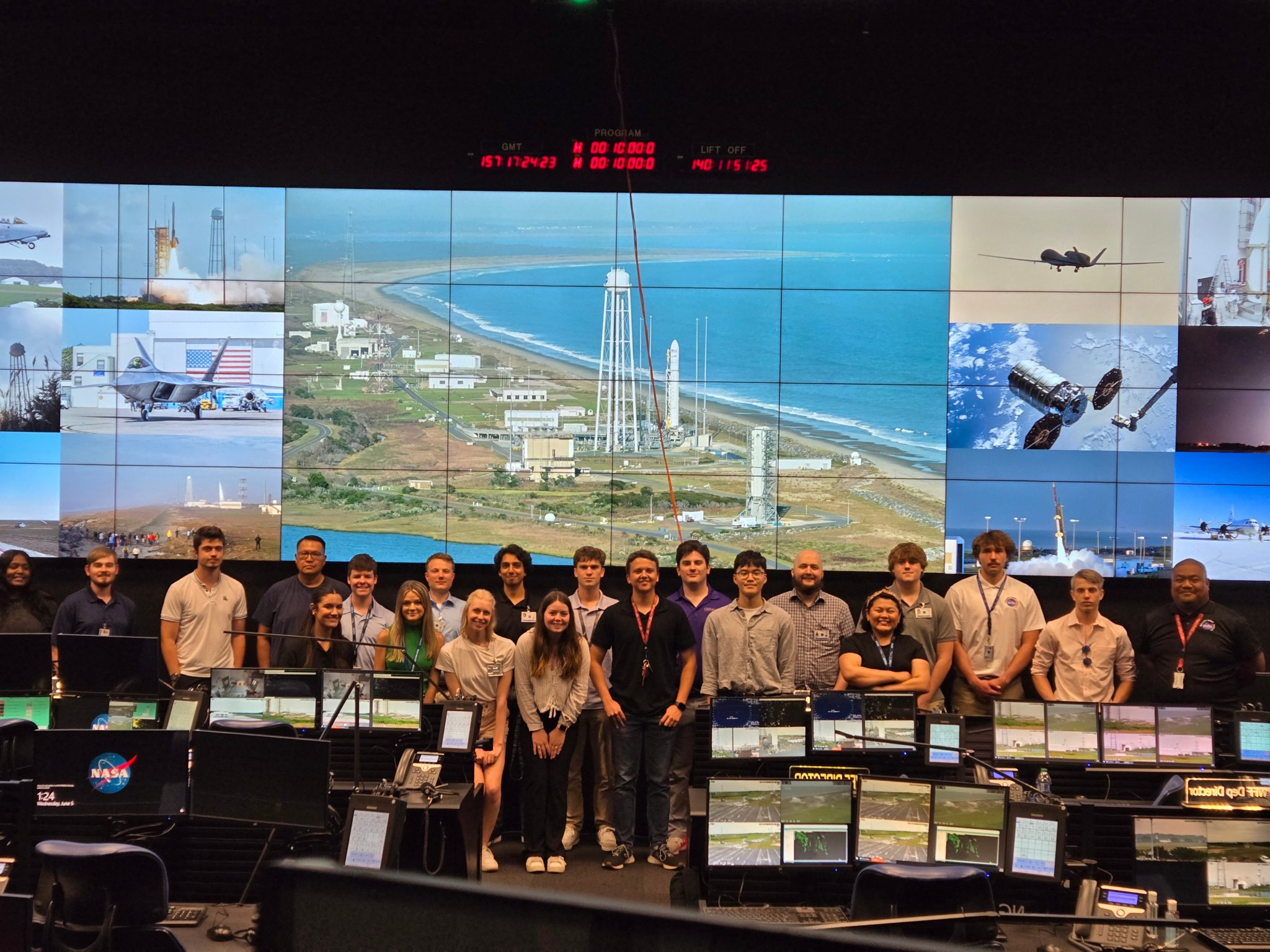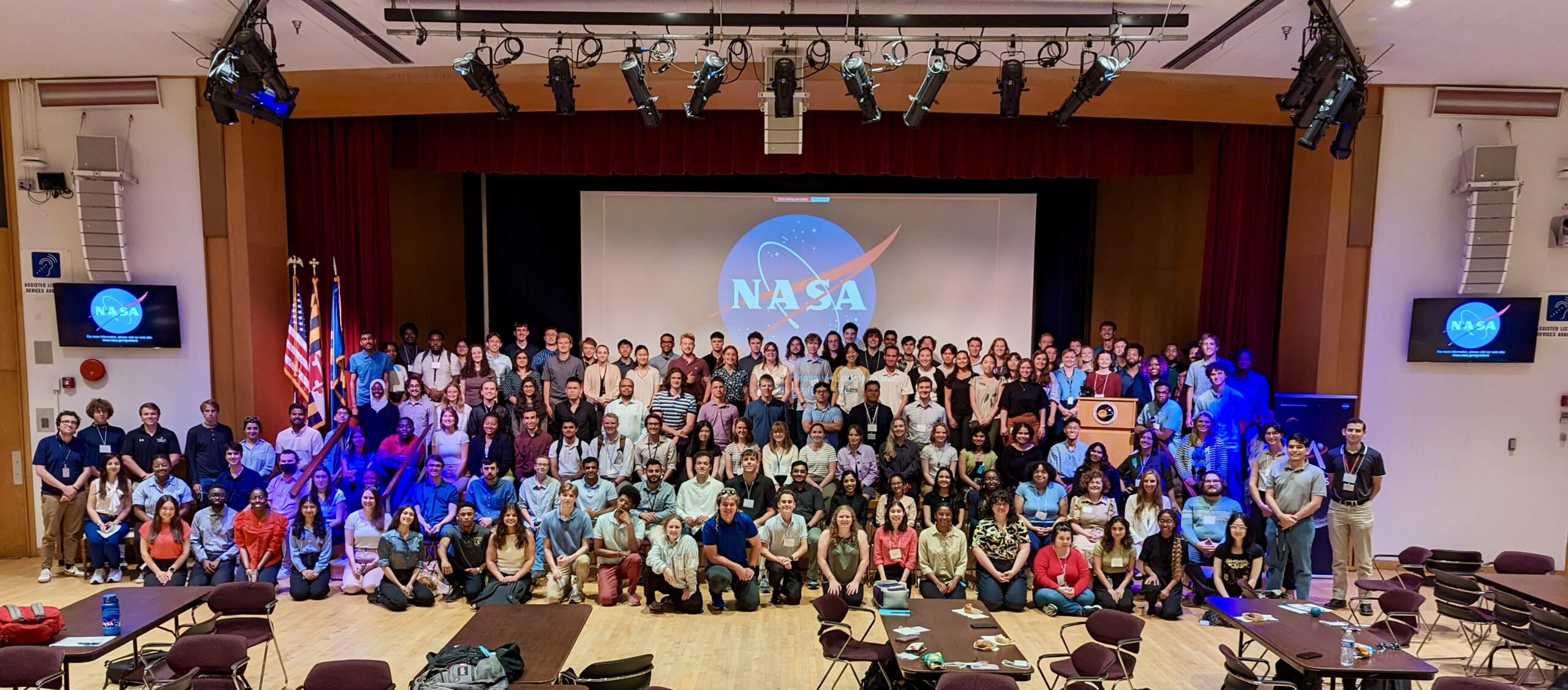Several hundred new faces walked through the gates of NASA’s Goddard Space Flight Center in Greenbelt, Maryland, for the first time on June 3. Who is this small army of motivated space-enthusiasts? It’s Goddard’s 2024 summer intern cohort.
Across Goddard’s campuses, more than 300 on-site and virtual interns spend the 10-week program contributing across all manners of disciplines, science, engineering, finance, communications, and many more. From helping engineers who will send new space telescopes into orbit, to communicating NASA’s scientific discoveries to the world, this cohort of interns hopes to bring their new ideas and perspectives to Goddard this summer.
 About 200 interns attended summer orientation at Goddard’s Greenbelt, Maryland, campus of NASA’s Goddard Space Flight Center, on June 3, 2024. This was the first in-person summer orientation since 2019.Credit: NASA/Jimmy Acevedo The Artemis Generation Takes Flight This group of interns is part of the Artemis Generation: they come to NASA near the culmination of the campaign that will return humanity to the Moon for the first time in more than 50 years. Through Artemis, NASA will land the first woman and first person of color on the lunar surface.
About 200 interns attended summer orientation at Goddard’s Greenbelt, Maryland, campus of NASA’s Goddard Space Flight Center, on June 3, 2024. This was the first in-person summer orientation since 2019.Credit: NASA/Jimmy Acevedo The Artemis Generation Takes Flight This group of interns is part of the Artemis Generation: they come to NASA near the culmination of the campaign that will return humanity to the Moon for the first time in more than 50 years. Through Artemis, NASA will land the first woman and first person of color on the lunar surface.
“I’m just excited to contribute to Artemis,” said Kate Oberlander, who just graduated from UCLA in aerospace engineering. “We’ll be helping connect communications between the Moon and Earth for the Artemis campaign, and that is so monumental. That’s exciting to be a part of.”
In addition to work on their projects, interns also have networking opportunities where they can meet current NASA employees and learn about careers in aerospace.
“I’ve been really enjoying getting to know my fellow interns, and also getting that professional development alongside technical skills,” said Oberlander, who plans on returning to UCLA to earn her master’s degree and learn more about optics, electromagnetics, and space exploration. She said her internship this summer will bring all her favorite subjects together.
Down to Earth: Interns Work Across Fields Interns at Goddard take on a diverse set of projects across many disciplines. “It’s a lot of learning — but I love learning. I’m like a sponge,” said Addie Colwell, an environmental science student at the University of Vermont.
Colwell’s internship focuses on stormwater management at Goddard. “We have to renovate the embankment of the stormwater pond,” Colwell said. “I’m assessing how that’s going to impact the wildlife there. It’s a lot of species identification and research.”
Emma Stefanacci, a science communication master’s student at the University of Wisconsin, Madison, will be working on the astrophysics social media team.
“I’m excited to see what social media looks like, as I haven’t been able to play in that realm of communications before,” said Stefanacci. She will help develop a campaign for the launch anniversary of XRISM, a telescope collaboration between NASA and the Japan Aerospace Exploration Agency (JAXA).
 This summer, NASA’s Wallops Flight Facility on Virginia’s Eastern Shore also hosts a diverse intern cohort, some of whom are shown here in the Range Control Center. Goddard manages Wallops on behalf of NASA.Credit: NASA/Pat Benner Working on the Next Generation of Space Discovery Kevin Mora is a student at Arizona State University studying computer science. Mora is working on several projects this summer, one of them focusing on pipeline coding in Python to help engineers working on the Nancy Grace Roman Space Telescope. “It’s literally like a pipeline — just moving data from here to there,” Mora said. “It helps the engineers that are building Roman get stuff done faster.”
This summer, NASA’s Wallops Flight Facility on Virginia’s Eastern Shore also hosts a diverse intern cohort, some of whom are shown here in the Range Control Center. Goddard manages Wallops on behalf of NASA.Credit: NASA/Pat Benner Working on the Next Generation of Space Discovery Kevin Mora is a student at Arizona State University studying computer science. Mora is working on several projects this summer, one of them focusing on pipeline coding in Python to help engineers working on the Nancy Grace Roman Space Telescope. “It’s literally like a pipeline — just moving data from here to there,” Mora said. “It helps the engineers that are building Roman get stuff done faster.”
The Roman Space Telescope is the next in line to carry on the Hubble and Webb legacy. Roman will have a much wider field of view than the space telescopes preceding it, giving scientists a bigger picture of the universe, and hopefully telling us more about dark matter and dark energy. Many interns are working on this space telescope, which is expected to launch by 2027.
Alongside new faces in this year’s program, some interns are returning to NASA for repeat sessions. Cord Mazzetti, a recent electrical engineering graduate of the University of Texas at Austin, will be continuing work on quantum clock synchronization that he began researching at Goddard last summer.
“It’s nice to be back here at NASA and to be able to dive into my work even faster,” said Mazzetti.
In-person Orientation Returns to Campus The interns’ orientation was the first to be held in-person since before the COVID-19 pandemic, according to Laura Schmidt, an internships specialist in NASA’s Office of STEM Engagement.
“It was thrilling to welcome our incredible group of interns and host our first onsite summer orientation in five years,” Schmidt said. “The energy was palpable as we welcomed nearly 200 interns onsite at Goddard, and I have no doubt that the stage is set for a fantastic summer ahead.”
By Avery Truman and Matthew Kaufman
NASA’s Goddard Space Flight Center, Greenbelt, Md.


